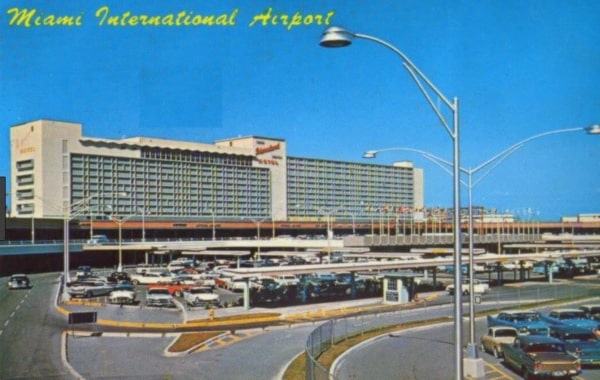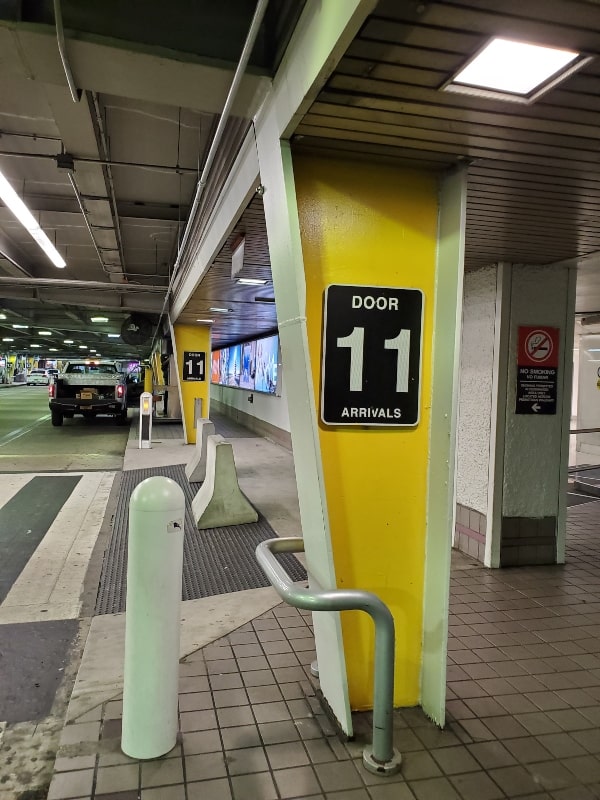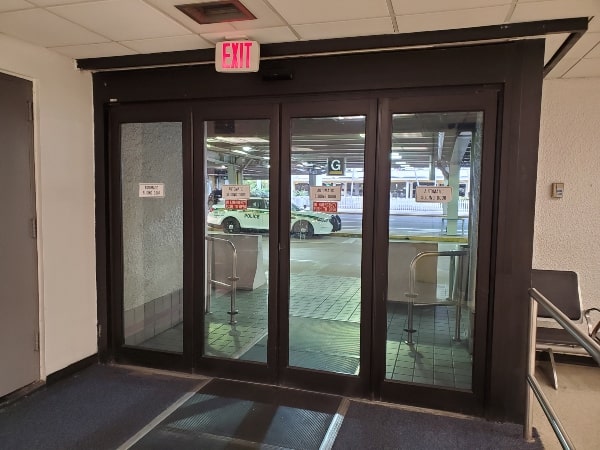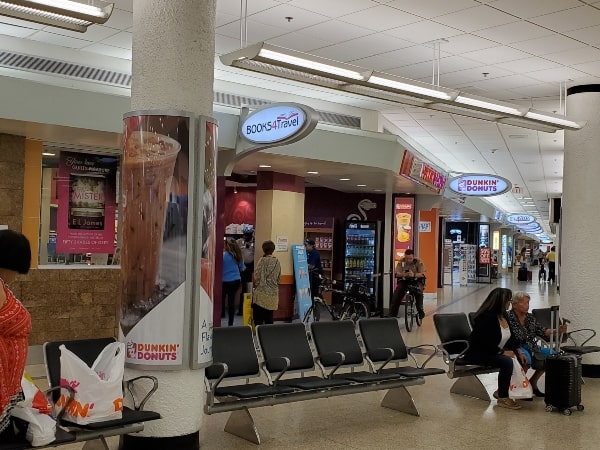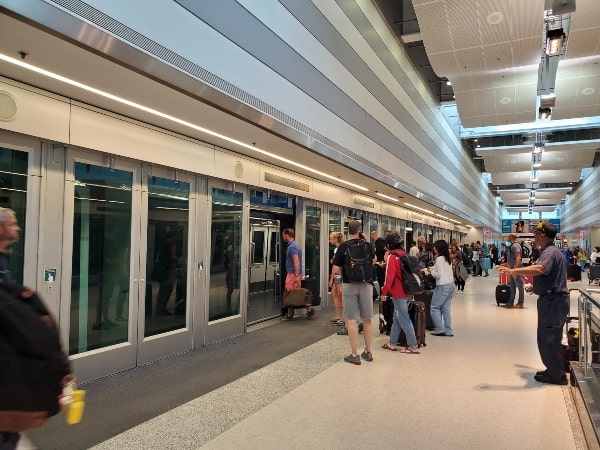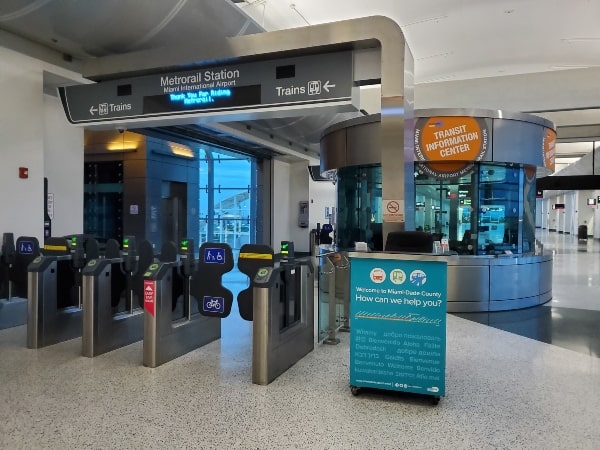There are many ways to get to Miami; by plane, train, boat, bus or car. That leads me to say that the gateways to the city are; the international airport, the port, the train station, the bus station, and the expressways.
In this series, Gateways to Miami, I will be giving information about each of the different ways to get to Miami for those who plan a trip to the Magic City or for those who live in Miami so they can help family and friends on their next visit to the city.
Contents / Contenido
History
The Miami airport opened its doors in 1920 with the name of Miami City Airport.
Miami City Airport – 1920 – Terminal
Miami International Airport – 1930
Miami International Airport – 1940 – Terminal Entrance
Miami International Airport – 1950 – Entrance
Miami International Airport – 1960 – Terminal Building and parking lot
At the present time, it is known as MIA airport. MIA is the airport and the city code created by IATA, that is the International Air Transport Association. The three-letter code MIA matches the name of the airport, Miami International Airport.
MIA is located in the Northwest (NW) quadrant of the city about 8 miles (13 km) from the city center. Initially, when it opened its doors, it was far from the city, but as the city expanded, the airport was absorbed by it.
PROUDLY SHOW WHERE YOU’RE COMING FROM WITH THESE LUGGAGE TAG T-SHIRTS.
CHECK OUT THE GALLERY BELOW!
Building Details
Its total area, including the 4 tracks and the areas of hangars, cargo, and office buildings, is 3,230 acres (1,307 hectares) of land.
The airport has 6 Concourses identified with letters, D, E, F, G, H and J that extend as giant arms, distributed in 3 large terminals, North, Central and South, which together form a large horseshoe, which is very convenient for the users in the case of having to move from terminal to terminal since it is not necessary to go outside the building as it happens in other airports worldwide.There are a total of 130 boarding gates and three levels.
• First Floor or Ground Level
This is the level for Arrivals, where inward passengers disembark.
Here is where Baggage Claim is. Outside, passengers can be picked up by friends or family at the curbside. This is also the area where ground transportation like taxis, share vans or buses, and hotel shuttles can be found. Access to parking buildings is also available from this level.
![]() Make it easy for the person picking you up by advising the door number on the column, as shown in the picture.
Make it easy for the person picking you up by advising the door number on the column, as shown in the picture.
• Second Floor
All Departures are on this level , where passengers leaving the city will find all the airline counters for check-in and where the baggage and passenger checkpoints are located.
Additionally on this level, you will also find many types of shops, from restaurants, kiosks, bookstores, gifts, cafés, ATMs, currency exchange offices, lockers to leave your luggage for a few hours, and even a hotel.
So, this is the place you need to be if you or someone with you is traveling from Miami to any part of the world. Access to parking buildings is also available from this level.

If you are leaving Miami, be careful what you buy to take on your trip before going through the checkpoints. For example, do not buy food or any type of drink, even bottled water because TSA agents will discard it.
Anything you want to buy for snacking onboard, you should purchase once you have passed the checkpoint. Inside the terminals where the boarding gates are, you will also find a variety of restaurants and kiosks.
For those driving to the airport from the city, upon entering the airport you will see ARRIVALS and DEPARTURES signs that will direct you to the correct level.
• Third Floor
This is the level with easy access from the parking buildings. It’s ideal to quickly move from one terminal to another as you will find moving sidewalks. This is especially helpful in case you are in a hurry or have a lot of luggage. The distance from one end to the other is just under one mile (1 km).
It is also the floor that communicates with the Skytrain and the MIA Mover.
The Skytrain
The Skytrain is a tram-like transportation located in the North terminal where Concourse D is. This terminal alone, which is the largest of all, has a length of 1 mile (1.6 km) and walking from one end to the other can take between 30 to 45 minutes, depending on the size of the crowd and your physical condition.
Skytrain will take you faster and you can get off at one of the four stops along the route. Each stop has two lobbies, one for passengers of domestic flights and another one for international flights. Concourse D alone has 60 Gates.
The MIA Mover
The MIA Mover, which leaves from the Central Terminal, the one located in the middle of the horseshoe, is the transporter that takes you to the Miami Intermodal Center or MIC.
Actually, there is a third transporter at the airport, the MIA e Train, but this is only for passengers who have to board their plane at gates E20 to E33. The transporter is not accessible to everyone in general since it is inside the Concourse E.
Naturally, all of these transporters are absolutely free.
What is the MIC?
MIC is short for Miami Intermodal Center and it’s located on 3797 NW 21 Street. That’s right next to the MIA, on the East side.
In a few simple words, it is a hub, or sort of a central station, that brings together the Tri-Rail station, the Metro Station, the Bus Terminal, the Trolley stop, and the different car rental companies in one place.
The Tri-Rail
The Tri-Rail is an interurban train with 18 stops that connects Miami with West Palm Beach, passing through Hollywood, Ft. Lauderdale and Boca Raton among other cities. It also connects Miami International Airport (MIA) with two Florida major international airports, the Ft. Lauderdale-Hollywood International Airport (FLL) and Palm Beach International Airport (PBI).
All trains are Air Conditioned and have free Wi-Fi.
The Metrorail
The Metrorail is quick and easy 25-mile elevated transportation system to gets you around Miami from 5:00 AM to midnight, seven days a week. Metrorail has two lines, the Green Line and the Orange Line, and a total of 23 stations. The Orange Line is the one that connects the MIA airport to the city.
Metrorail is the equivalent to the Metro or Subway that other cities have. The cost starts at $2.25 per person per way. There are discounts if you purchase a day, week or month pass. You will find an information desk, brochures, schedules and maps 24/7 in English and Spanish. All trains are Air Conditioned and have free Wi-Fi.
![]() The metro will take you directly to Downtown where you can sightsee and visit Bayside by Biscayne bay. You will need to get off at Government Center Station where you can connect with the Metromover.
The metro will take you directly to Downtown where you can sightsee and visit Bayside by Biscayne bay. You will need to get off at Government Center Station where you can connect with the Metromover.
The Bus Terminal
It’s the starting and finishing point for lines such as Greyhound and Megabus, with departures to Orlando, Tampa and other locations. The terminal, which is where you can find more information, public bathrooms, ticket offices and a waiting room, is located on the ground floor. You just have to follow the signs from the MIC.
Nearby, you will also find the stops for the Metrobuses, which are the local buses.
The Metrobuses
All buses are Air Conditioned and have Wi-Fi.
The local routes are the following:
7 – This route goes to and from Downtown Miami. When you look at the schedule or the map, note that although the main route number 7 goes from Downtown to the Dolphin Mall, the extension that arrives at the airport is 7A only, and does not reach the Dolphin Mall. Weekday and weekend schedules are different. Schedule Route 7 Itinerary Route 7
37 – This route comes from Hialeah, passes through the airport and continues to the Southwest or SW passing through Coconut Grove and ending at the South Miami Metro station. Weekday and weekend schedules are different. Schedule Route 37 Itinerary Route 37
42 – This route comes from Opa-Locka in the Northwest or NW, crosses Hialeah by LeJeune Road and goes to the south, passes through the airport and continues to the Southwest or SW to Bird Road. Weekday and weekend schedules are different. Schedule Route 42 Itinerary Route 42
57 – Route goes from the Airport to the Southwest or SW area, ending at Jackson South Hospital, passing through Sunset Place shopping. It does not operate on weekends. Schedule Route 57 Itinerary Route 57
110 – Also known as Route J, goes from the Airport to Miami Beach and vice versa. The schedule during the week is different from Saturday and Sunday. Note this is not the Express Line. Schedule Route 110 Itinerary Route 110
150 – Also known as Miami Beach Airport Express, is the express route from the Airport to Miami Beach and vice versa. Although its portion between the airport and Miami Beach is non-stop, once in Miami Beach it does have more stops and it does reach further south than Route 110. The schedule during the week is different from Saturday and Sunday. Schedule Route 150 Itinerary Route 150
238 – Airport to Dolphin Mall, passing through International Mall. It operates from Monday to Friday and it is not an express service like route 338. It does not operate on weekends. Schedule Route 238 Itinerary Route 238
297 – Northwest or NW Area, Miami Dade College North Campus, NW 27 Avenue. It does not operate on weekends. Schedule Route 297 Itinerary Route 297
338 – Express Line that operates only on weekends between the airport and the Dolphin Mall, stopping at the International Mall and IKEA. Schedule Route 338 Itinerary Route 338
The Trolley
The Trolley is a free transportation system. The city of Miami has 12 different routes. They are very convenient to move from one place to another and is a system that both visitors and residents can benefit from.
In this case, if you have several hours between flights, you can ride it for a free sightseeing trip in the area. Make sure of the schedule and calculate to have enough time between your return to the airport and your next flight.
This route is called Flagami Trolley and operates from 6:30 AM to 11:00 PM from Monday to Saturday. It does not operate on Sunday. All trolleys are Air Conditioned and have Wi-Fi. Flagami Trolley Schedule and Itinerary Map
Passengers with Mobility Challenges
The airport is suited for all those who need to move with a wheelchair or scooter. That is all floor surfaces and ramps, restrooms, public telephones, parking, elevators, trains and vehicles of transport.
All signed with this international symbol:

Passengers with Service Dogs
The airport has indoor and outdoor relief areas for service dogs.
Outdoor Areas:
These areas are located in Level 1 – Arrivals, before checkpoints close to the parking lots.
1- In front of door 5
2- In front of door 15
3- In front of the door 28
Indoor Areas:
These areas are located in Level 2 – Departures, after checkpoints, inside the concourses..
1- Concourse D, Gate D34
2- Concourse F, Gate F7
3- Concourse G, Gate G5
4- Concourse J, behind door J3
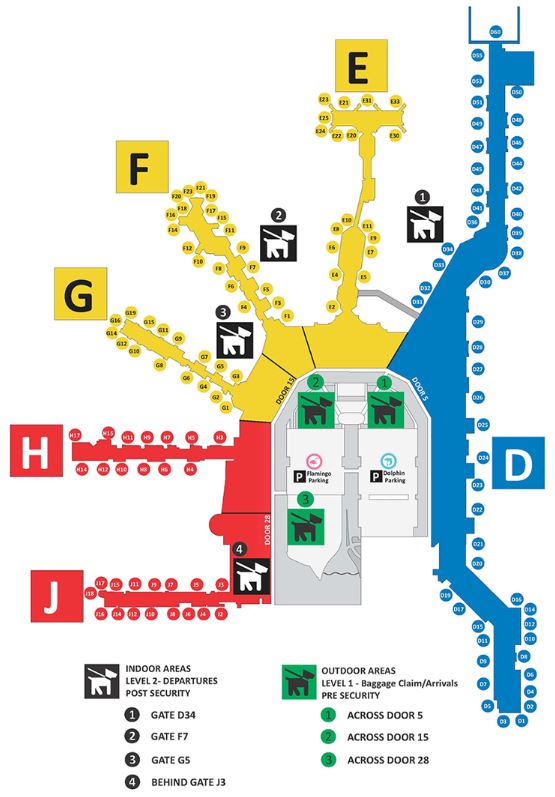
Important Facts
- The Jumbo Jet Boeing 747-100 of National Airlines (1934-1980), the largest commercial aircraft of the time, began its non-stop voyages Miami-New York on October 1, 1970. That same month, but on the 25th, National started its Miami-Los Angeles transcontinental route, also with the Boeing 747-100.
- MIA was one of the four airports where the Concorde arrived in the US. On June 14, 1974, was the first time that the Air France Concorde arrived in Miami. The flight that originated at the Boston airport lasted 80 minutes.
- On June 10, 2011, MIA welcomed the Lufthansa Airbus A380 for the first time. Other Airbus A380 that followed, were Air France in December 2014 and British Airways in October 2015.
Before You Go
Is there something you would like to know that I have not covered in this post?
Is there something you that surprised you? Have you ever been to MIA?
How was your experience? Are you planning to visit in the near future?
Please, leave your comment below and don’t forget to share this post with someone you know that might be planning to visit Miami in the future.
Thank you for reading my article.







